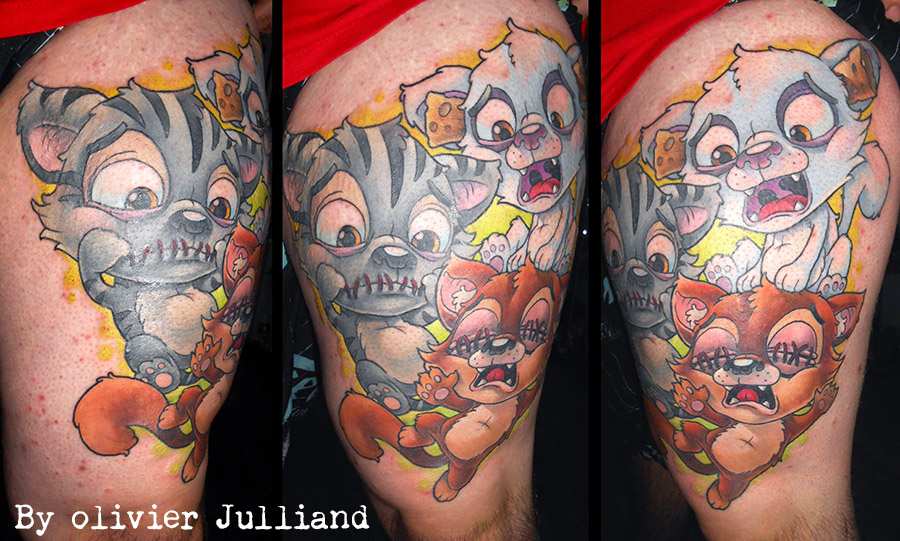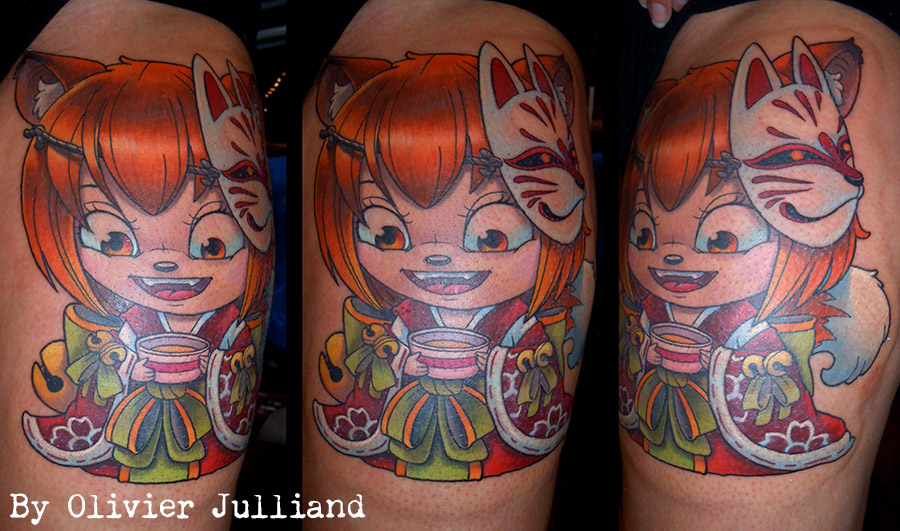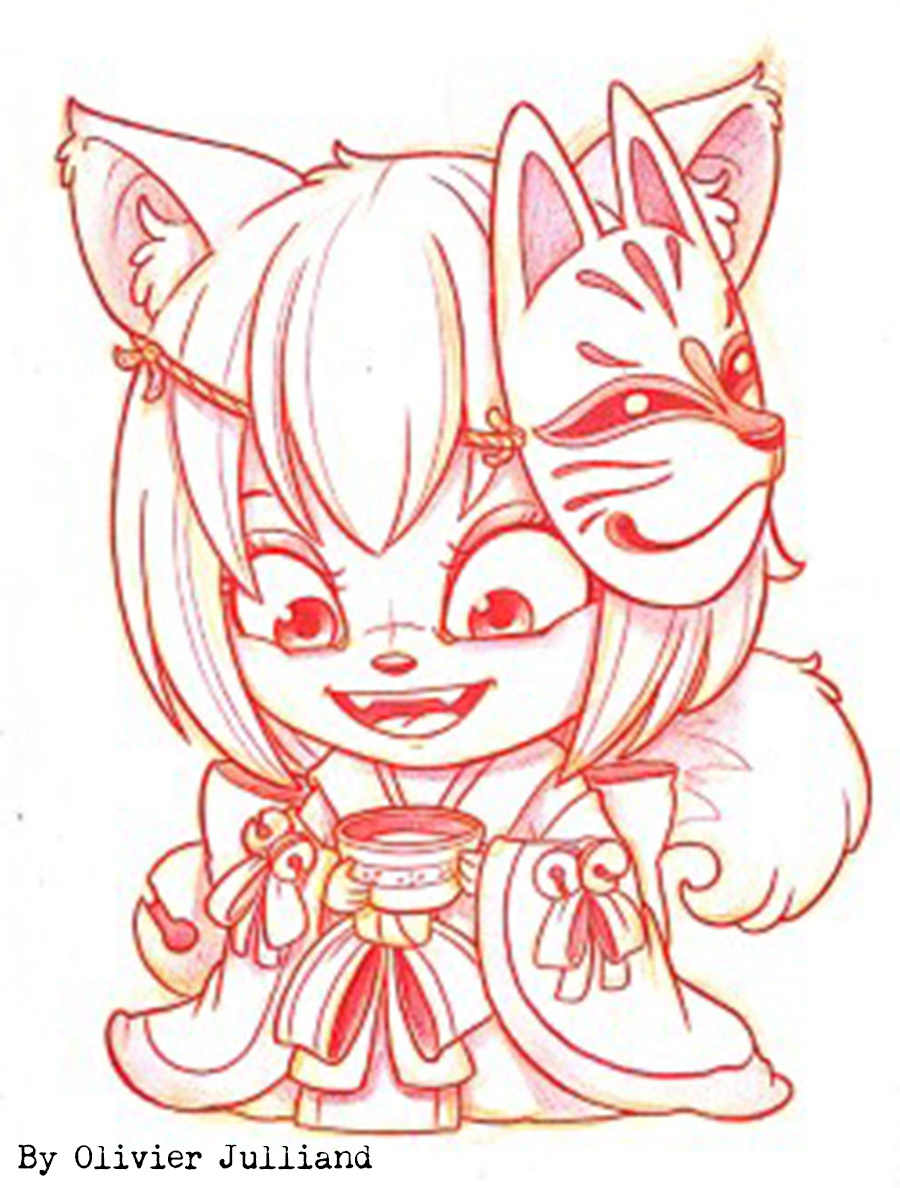45 is the number of years of experience that Olivier Julliand and Vincent Bizzaroïd have accumulated. ATC has followed with interest their career since the beginning of Glamort’s creation. And the least we can say is that the Montreal shop has seen a lot of good people in its boxes. A strong identity, and above all a perfect line of conduct which helped them make it through the good and bad caused by the democratization of tattooing. From the beginning of their personal journey to the state of the art of Quebec tattooing in 2019, through the questioning of their trade and the connection to the people who pass through their needles : Geraldine, Vincent and Olivier reveal to us with no filter their vision of tattooing in their premises located in the heart of “Château St-Ambroise”.


Olivier, you founded Glamort with your wife Géraldine in 2007. 20 years of tattooing in which the story begins with your brother Patrick who taught you how to tattoo in Toulouse, can you tell us more?
Olivier Julliand: My brother showed me what he knew. But I learned a lot on my own. I've always drawn, but I never thought it would be my profession. Twenty years ago, tattooing was something underground and I didn't necessarily think about making a career out of it.
What about you Vincent?
Vincent Bizzaroïd: 27 years old! I started tattooing alone at home, I bought machines from Riton.



Is that what you have in common, you both started drawing before tattooing ?
OJ: Yes, except that Vincent had studied drawing. I used to draw for myself because I liked it, I went to an agricultural school, I worked a lot in public works but the only artistic thing I did was a make-up school. VB: I had started a BAC A3 but I stopped in the first year. I wanted to draw comics, until I found tattooing. I wasn't disciplined enough for comics.


Vincent, did you integrate comics into your style ?
VB: Yes, you can see a bit of it. It's not cartoony like Olivier, it's more comic inspired.
With a lot of traditional codes?
VB: Well, Japanese tattoo is in a way like comics. Japanese prints are stories, they are the first comics.
At what point in your career did you feel you were right in your approach?
VB: After six years working on the technique, I felt that I was less in the learning process. After that the drawing starts to evolve, when you're no longer focusing too much on the technical side.


Both faithful to Coils ?
OJ: I've never tried a rotary machine. VB: I tried one for a year then I went back to Coils. They're not bad tools, but they're still hammers. It depends on your work, but you'd better be careful, you better not do tiny shades with that. O.J.: It depends, when you see in conventions that 70% of tattoo artists work with rotaries, there must be something going on. Personally, I didn't find them necessary or desirable, because I like the way my machines work. You can't say to someone: "I'll try it out on you and see how it goes", you know? It would make me so nervous. And even if we’re friends, how do you know how your tattoo's going to evolve? Tattooing is always a long-term thing. If everything you did didn’t fuck up but then goes away, you know the whole coming year's gonna be shit.



Don't you feel the need for sustainability is coming back?
OJ: I hope so, but I don't feel it. People are in the moment. If the customer walks out and the tattoo isn’t perfect on the spot, he's going to pout, even if you tell him to wait for the tattoo to “sit”. I'm lucky to work with people who follow me and ask me for big pieces. So, some people have a vision of my work in time. They don't really have any apprehension about the work they're going to get done. It's not just about luck, because it's a job to build customer loyalty, both technically and socially.


While the offer is growing and work quality aside, the customer seems more demanding on the relationship with his tattooist?
GJ: Absolutely, the offer is good too. It forces people to realize that they have to be correct, serious, that it's a real job. That even if you don't tattoo the relationship is very important.

It's always been a constant with you, to privilege the relationship with the client…
OJ: The human relationship is at least 50% of the work. Because it will make your work easier, and it will bring you loyalty. Because the person will have a good experience and will talk about it around him. GJ: You're also going to discover some very interesting people, as Vincent was saying: what job gives you access to such a wide range of society? It's not for everyone. VB: And on the other hand, you sometimes have to face, besides the pain, some rather heavy stories…



You have different styles, which means a different clientele?
VB/OJ: Definitely. VB: I still have a lot of outsiders, but there are fewer of them now, that's why I'm struggling a bit more (laughs). I have about ten very loyal customers that I will end up filling out completely. OJ: Me it's more open, graphically it touches more people.
What can we wish for you for the future?
VB: I'd like to have my little piece of beach in Nicaragua (laughs). OJ: No more kidney stones (laughs) I hope that the graphic side and the importance of drawing will come back to the front of the scene. https://www.facebook.com/glamorttattoo https://www.instagram.com/olivierjulliand https://www.instagram.com/vincentbizzaroid/ https://www.instagram.com/reb80












































